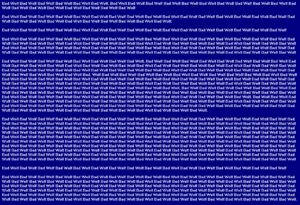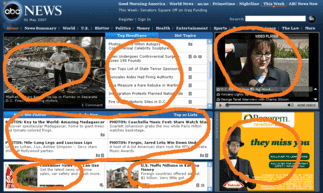User:Knair1/Digital Content

With the advent of digital media, content, which had not been particularly useful up to that point, could suddenly be delivered into the homes of ordinary Americans, and even Canadians. This new and accessible form of content, called digital content was a startling invention, with wide reaching implications for both content-creators and content-deliverers, not to mention the content itself.
Internet-Based Content-Delivery[edit | edit source]
The widespread adoption of TCP/IP protocol throughout the 1980's opened up new channels of communication that crossed international lines, and gave birth to a 'global village' of thirty year old men who lived with their mothers. However, in the excitement over the multitude of new ways of accessing content, it was easy to forget the need for the content itself, which was to be accessed. A characteristic example of this was a phenomenon known as AOL, which allowed certain users, at a cost of approximately $2500 of electronic hardware in addition to a $30-50 monthly rate, to access sports scores that they could have looked up on ESPN in half the time.
As the internet grew in popularity, the need for content became increasingly apparent. To some extent, this vacuum was filled by pornographers, who, as usual, were the first to recognize the significance of the new media. However Americans soon tired of the monotony of pornographic websites, with their aggressive color schemes, their gratuitous use of exclamation points, and their endless hyperbole.
The Early Days[edit | edit source]
Thus digital content was born. Early digital content consisted of long strings of 0's and 1's. Obviously, the majority of this content was terrible. 0 itself was uninteresting, merely resembling a circle which had been elongated slightly. Nevertheless, a sizable amount of content was created with zero alone, including:
- 00, bicycle
- 000, tricicle
- 0, unicycle
- , nullcycle
- 00000000000000, centipede
- 00, shakira (rear view)
The addition of 1 was a godsend to early creators of digital content. Examples of 1-only content included:
- 111, gallows
- 1111111111111111111111111111111111111, fence
- 1, new macbook
- 11111111111111, migrating penguins
Some found this new form of expression restrictive, however, and advocated a return to ancient arts such as painting and sculpture. The true advantages of digitization were finally revealed through the combination of 0's and 1's, which offered a wide, virtually unlimited range of expression:
- 010, phallus
- 111111111111100, rocketcar with exhaust
- 111111111001111, shakira fighting off horde of angry penguins
As content creators became accustomed to the ins and outs of the new medium, they began to experiment, throwing in 2's, 3's, and sometimes even fractions such as 5/6. A small cadre of avant-garde content-creators began experimenting with the use of "irrational numbers", however these numbers were rejected by the mainstream as being "too analog."
Content A Splosion[edit | edit source]
The trend caught on. Content seemed to be everywhere - magazines, television, in the home, even at your local supermarket. Phrases such as "content-rich" began to circulate the zeitgeist. Website-designers realized that content could be packed into narrow columns at the side of a webpage, increasing the content delivery rate of these systems by up to 33%. Not to be outdone, television news networks invented the "scrollbar," a narrow strip at the bottom of the screen that could deliver text content in parallel with existing audio and video content channels. These scrollbars could be stacked one on top of the other, delivering up to 6 or 7 channels of simultaneous content. Unfortunately, federal regulations restricted the number of content channels to a maximum of 12, as it was at that time the belief that to deliver content at rates higher than this would lead to content-overload, a degenerative neural condition characterized by drooling, aversion to silence, and/or spontaneous brain a splosion.
Webcams[edit | edit source]
The situation came to a head with the invention of the webcam. With this device, any 12 year old with opposable thumbs could generate millions of bits of content in a matter of seconds. In one well documented incident[1] an 11 year old boy from Boise, Idaho who was later classified as legally retarded used a Logitec UltraVision QuikCam to generate over 343.3 Megabytes of video content consisting of himself running around his living room in a cape shouting "I'm the biggest DINOSAUR fighters!" After careful examination of the video, leading information theorists shocked the world by announcing that it contained almost 20 times the informational content of the entire collected works of William Shakespeare.
Government Crack Down[edit | edit source]
It was clear the situation had gotten out of hand. As usual, people turned to the U.S. Government for answers. In 2006, in a desperate effort to staunch the flood of content, congress and President George W. Bush passed the USA Patriot Act, which authorized the government to destroy content which it deemed dangerous, inflammatory, or just plain stupid. The law immediately met with universal approval, and the internet soon became a veritable treasure trove of accurate, relevant, well-researched, and elegantly presented information.
Notes[edit | edit source]
- ↑ Note: Incident not actually documented.



